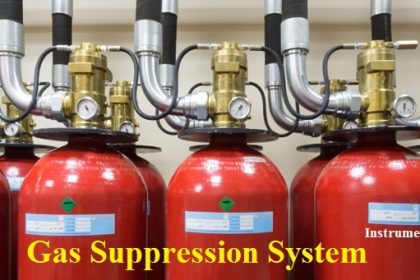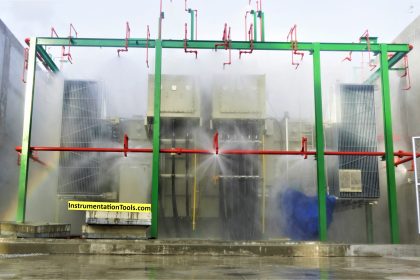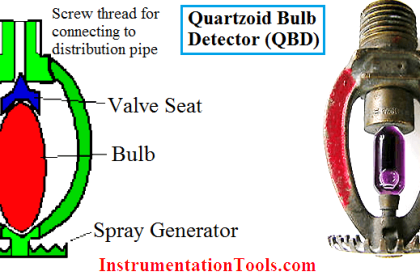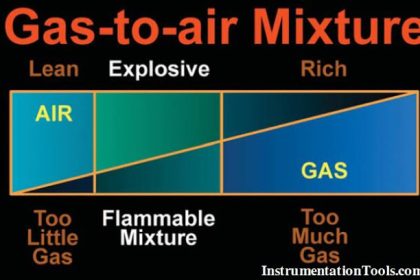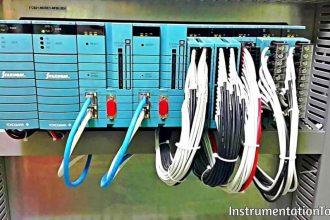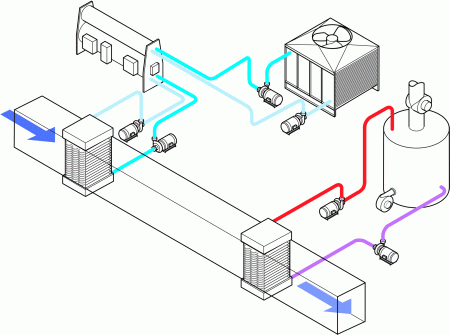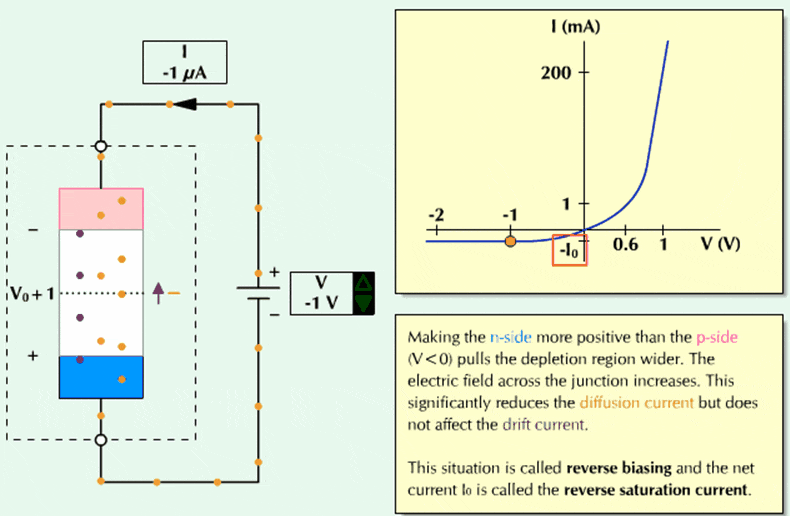The Infrared (IR) detection method is based upon the absorption of infrared radiation at specific wavelengths as it passes through a volume of gas. Typically two infrared light sources and an infrared light detector measures the intensity of two different wavelengths, one at the absorption wavelength and one outside the absorption wavelength. If a gas intervenes between the source and the detector, the level of radiation falling on the detector is reduced. Gas concentration is determined by comparing the relative values between the two wavelengths. This is a dual beam infrared detector.
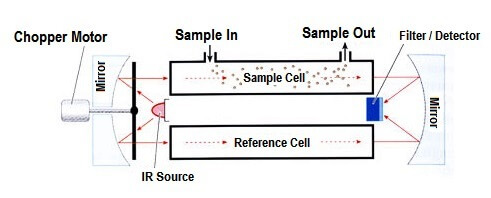
Infrared gas detection is based upon the ability of some gases to absorb IR radiation. Many hydrocarbons absorb IR at approximately 3.4 micrometers and in this region H2O and CO2 are relatively transparent. As mentioned earlier, there are some hydrocarbons and other flammable gases that have poor or no response on a general purpose IR sensor. In addition to aromatics and acetylene, hydrogen, ammonia and carbon monoxide also cannot be detected using IR technology with general purpose sensors of 3.4 micron specifications.
Advantages
The major advantages of IR gas detectors:
- Immunity to contamination and poisoning.
- Consumables (source and detector) tend to outlast catalytic sensors.
- Can be calibrated less often than a catalytic detector.
- Ability to operate in the absence of oxygen or in enriched oxygen.
- Ability to operate in continuous presence of gas.
- Can perform more reliably in varying flow conditions.
- Even when flooded with gas, will continue to show high reading and sensor will not be damaged.
- Able to detect at levels above 100 % LEL.
Disadvantages
The limiting factors in IR technology:
- The initial higher cost per point. IR detectors typically are more expensive than catalytic detectors at initial purchase.
- Higher spare parts cost.
- Gases that do not absorb IR energy (such as hydrogen) are not detectable.
- High humidity, dusty and/or corrosive field environments can increase IR detector maintenance costs.
- Temperature range for detector use is limited compared to catalytic detectors.
- May not perform well where multiple gases are present.

